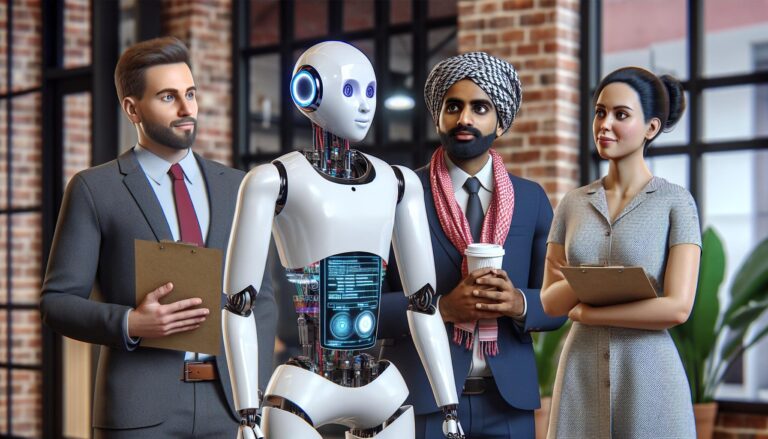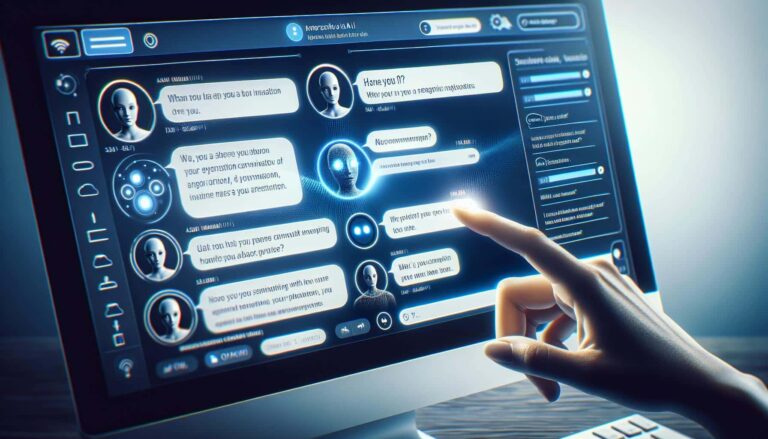Uncovering the Possibilities of ChatGPT: A Comprehensive Examination
Last Updated on February 25, 2024 by Alex Rutherford
As online businesses and writers look to become more efficient, many wonders if ChatGPT is the answer. This new language model has some very promising capabilities. In this deep dive, we’ll explore what ChatGPT is and how it can help you get your work done faster.
PowerBrain AI Chat App powered by ChatGPT & GPT-4
Download iOS: AI Chat
Download Android: AI Chat
Read more on our post about ChatGPT Apps & Chat AI App
What is ChatGPT, and what can it do?
ChatGPT is a powerful natural language processing (NLP) tool that uses an AI-based language model to create contextualized and intelligent conversations. ChatGPT has the capability to generate longer, more varied, and more human-like conversations by processing large amounts of data from language sources such as books and internet discussions. This revolutionary technology gives anyone access to a unique type of automated dialogue generation for conversational agents, Q&A systems, and question-answering applications. Whether your company needs to generate customer support online or a student needs assistance with school assignments, ChatGPT offers advanced capabilities in generating natural conversations between machines and humans. By utilizing the cutting-edge artificial intelligence behind ChatGPT’s language model, conversational agents become more accurate than ever before while also giving users a variety of options for customizing their interactions. With its innovative ability to analyze data and generate conversations based on these insights, ChatGPT unlocks various possibilities in every industry field—making it an invaluable tool for years to come.
How does ChatGPT work, and what kind of data does it need to function properly?
The powerful language model was developed to enable natural dialogue, automate customer service conversations and generate insights from existing customer interactions. By leveraging the power of machine learning, ChatGPT consumes vast amounts of conversational data and adjusts to its various contextual nuances, retaining the capability for sophisticated conversation with humans. To achieve this level of fluency, ChatGPT requires proper training using real-world conversations framed in such a way that the language model can understand them correctly. This training allows it to become familiar with common keyword terms, respond using natural language and infer intent from the context. Additionally, ChatGPT requires evaluation datasets to measure its understanding accuracy and continuously prompt improve rapid performance. All things considered, once properly trained, ChatGPT will be able to converse just like any human would do – engaging customers accurately and effectively.
AI Chat Bot App based on GPT 3 Technology
An AI chatbot app based on GPT-3 technology can revolutionize the way we interact with machines. GPT-3, or Generative Pre-trained Transformer 3, is a state-of-the-art language model developed by OpenAI that has the ability to understand and generate human-like text. By leveraging this technology, an AI Chat Bot App can provide users with a highly intuitive and natural way to communicate with a machine. It can understand and respond to users’ inquiries and commands and even carry out actions, all in a way that feels just like talking to a human. The app can be downloaded on both IOS and Android platforms from the following links:
iOS: AI Chatbot
Android: AI Chatbot
What are some potential applications for ChatGPT that go beyond simple chatbots?
ChatGPT is a powerful AI Chatbot backed by the most advanced language model and is capable of much more than just being a simple chatbot. Its potential applications go far beyond simple conversation and into areas such as anomaly detection, complex data analysis, knowledge management, virtual assistant tasks, and many more. ChatGPT app can be used to build resources and assets for different organizational roles, such as customer service agents or IT support staff, or even provide self-serving platforms for customers that can manage their account activities. ChatGPT AI can also be used to provide recommendations on products and services based on customer behavior, build detailed profiles of customers to help them better understand their wants and needs, and analyze usage data to increase efficiency. ChatGPT is the perfect mix of machine learning technology with natural language processing capabilities, making it ideal for expanding the intelligent application development horizon.
How accurate is ChatGPT compared to other language models, and how can its accuracy be improved further still?
ChatGPT is a powerful language model that has generated lots of interest recently. In terms of accuracy, it typically offers more than 90% when tested on the most commonly used datasets. However, ChatGPT can be improved even further. With the right training and actionable insights, its accuracy score could be fine-tuned to offer state-of-the-art performance far exceeding what is currently achievable with other language models. For example, focusing on model complexity/depth and increasing the dataset size should help significantly improve performance. Additionally, payload optimization techniques such as pre-processing, fine-tuning, and even end-to-end training approaches can be used to monitor and boost ChatGPT’s accuracy levels regularly. In summary, with the right strategies and approaches, ChatGPT’s capabilities can go beyond what existing language models are delivering today.
Are there any ethical concerns surrounding the use of ChatGPT or other similar language models?
The advent of language models such as ChatGPT is an exciting development but also one that can create ethical dilemmas. For example, some questions arise around the accuracy of the generated text, especially since these language models often involve GAN technology and can take a long time to develop and debug. Additionally, there is a risk that the results generated by these models could fail to adhere to certain ethical principles or potentially mislead readers; this is incredibly discouraging, considering many people will rely on the generated text for decision-making. Therefore, developers and users must consider any potential risks associated with using ChatGPT and other language models before implementing such technologies. As we move towards an increasingly automated world, it’s our responsibility to ensure the applications of these types of technologies are both accurate and beneficial to keep society safe from harm.
What does the future hold forChatGPT and other deep learning-based language models?
ChatGPT and other deep learning-based language models make up an incredibly exciting field of research with the potential to revolutionize natural language processing and many other areas of everyday life. As ChatGPT and other related models are exposed to larger datasets, they will become more powerful. They can then take on complex tasks that result in an impressive performance. In the future, we will see a rise in artificial intelligence capabilities due to the continued development of data-driven learning methods. Additionally, these models will likely become more widely accepted across industry sectors due to their various applications, such as improved fraud protection through better document identification techniques. Overall, the future looks promising for these models, paving the way for more significant innovation and efficiency in many areas.
The Takeaways
ChatGPT is a powerful new language model that has the potential to revolutionize how we interact with computers. With its ability to generate intelligible and natural-sounding responses, ChatGPT could one day become the primary means we communicate with artificial intelligence. While there are still some challenges to overcome in terms of accuracy and ethical concerns, the future looks bright for ChatGPT and other deep learning-based language models.
















